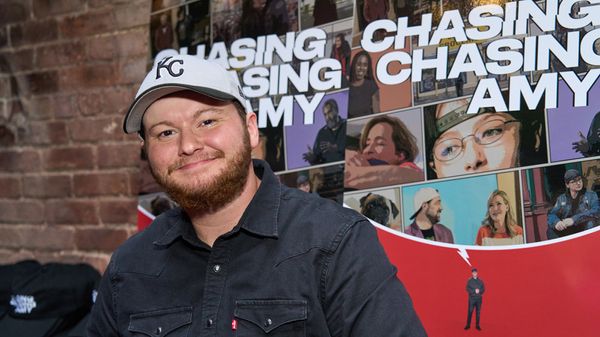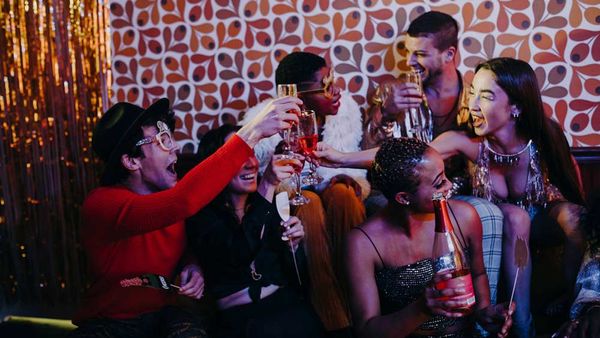
February 26, 2017
Magical Mystery Tour
Sura Wood READ TIME: 4 MIN.
How can you have a show about the counterculture that's short on sex, drugs and rock & roll? The answer is: With difficulty. But that's not all that's missing from "Hippie Modernism: The Struggle for Utopia," a much-anticipated, major new exhibition now at BAMPFA.
Organized by the Walker Art Center in Minneapolis with about 80 pieces added to pay homage to the movement's Berkeley/San Francisco epicenter, its arrival coincides with the 50th anniversary of the Summer of Love. Watch for a host of celebrations around town to reach saturation level in the coming months. It also comes at a political moment when people, hungry for the idealism, activism and progressive thinking of that era, are nostalgic for its rallying cries: The prizing of social justice, economic, racial and gender equality, environmental consciousness and, of course, free love.
The curatorial premise is that the exhibition's cultural artifacts - geodesic domes, photographs of handmade houses and performance groups with agendas, the Whole Earth Catalogue, silkscreen prints protesting the Vietnam War, assorted nutty inventions - are expressions of potent, sometimes way-out intellectual ideas that infiltrated the art, architecture and design of the day. If only they had pulled it off. With few exceptions, the concept, however intriguing, and the tenor of the times aren't communicated in the galleries, making this struggle for Utopia more sociology thesis than art exhibition, For a show that purports to be about resistance, it's peculiarly bloodless, with little or none of the thrust and parry and roiling conflict that defined the time, gave it its disruptive energy, and made it the decade that just won't die.
For those who were there or on the fringes, HM may resonate as a trip down memory lane, but younger visitors may justifiably wonder what all the fuss was about. The exhibition, a surprisingly strait-jacketed affair that's not as provocative as it should be, won't clue them in or turn them on. Still, there are incidental rewards, like getting lost in a beautiful collection of acid-trippy Bay Area psychedelic posters. With the flourishing of the local rock scene in the late 1960s, posters created by gifted artists became a cottage industry. Shops were exclusively devoted to selling them, and freelance vendors hawked them on the street. Their otherworldly, Freudian dreamscapes and neon colors promoted bands such as Big Brother and the Holding Company, Jefferson Airplane, the Chambers Brothers, and Vanilla Fudge, though the ostensible subject matter was hardly the point.
The cavernous galleries on the main floor tend to swallow exhibits, leaving visitors to roam and perhaps stumble upon finds, like the zany, futuristic contraptions whose visionary inventors, one surmises, must have had a pharmacological assist. Haus-Rucker-Co, a Vienna-based design collective influenced by the space race and what then passed for high-tech, melded space-age gadgetry with psychedelic phantasm and doomsday predictions. Their "Mind Expander 2" (1968), a two-seater fabricated from black Plexiglas and equipped with a transparent fuchsia hood and a helmet with electronic gizmos attached, is tailor-made for a zonked-out magical mystery tour. "Electric Skin 1," a Kool-Aid-pink jumpsuit with metallic appliques that emits sparks when touched, and "Roomscaper" (1968), a tall, oblong, vinyl plastic tube that has a woman's index-finger screen-printed on the outside, and is anchored in an illuminated base shaped like a flower pot, hail from the same brain trust. Cobbled together from IBM castoffs, plywood and circuitry, USCO's "Triple Diffraction Hex" (1965) is housed in a box of the sort used for a traveling puppet theater, embossed with stars and numerals, and topped with a brass eagle. Wait for the three hexagons, fastened to the front, to rev up and whirl, accompanied by colored strobe lights; then repeat.
The anarchic spirit of the late 1960s and early 70s, a period of self-reinvention when one could be whatever one wanted to be with no rules, no class division, no judgment, found its apex - and an entertaining vehicle - in the Cockettes and Angels of Light. Established in 1969 in the Haight-Ashbury by George Harris (a.k.a. Hibiscus), the Cockettes specialized in gender-bending, "acid-drag" pageantry, a clarion call for sexual liberation fueled by a liberal infusion of LSD. Their playful insanity, outrageous costumes, glittery gold makeup, and hymns to glorious excess endeared them to raucous audiences attending their late-night performances at the Palace Theater. In 1971, Harris, along with other members, formed Angels of Light, a commune-based group that pooled resources for tacky spectaculars that envisioned a world they hoped would come to be. The antics of both troupes are documented in photographs displayed in "Creative Identity," a too-small section that also contains a Lyla Montez costume with lace-crested tiara and plenty of tulle for the Angels' 1974 production Whatusi in San Francisco.
The cross-dressing Cockettes are prominently featured in the newly restored 16mm film "Luminous Procuress" (1971), directed by Salvador Dali prot�g� Steven Arnold. Shot in the Mission District, the story recounts the erotic adventures of two naive hippie dudes who happen upon a mystical mansion, where they enter a transformational realm ruled by Pandora, the procuress of the title (think Virgil in Dante's "Divine Comedy") who acts as their guide, introducing them to a garden of delights unconstrained by gender or desire. It has its world premiere as part of "Cinema and Counterculture" (1964-74), an adjunct film series that successfully captures some of the chaos, euphoria and political turmoil of the decade. The program includes Antonioni's "Zabriskie Point," a view of the American counterculture from abroad, shot in Death Valley and LA with a pair of young, desperately beautiful, alienated lovers at its center - the photogenic male lead had recently been released from prison - as well as portraits of various Black Panthers, and Peter Watkins' "Punishment Park," a faux, cinema verite depiction of the U.S. veering into totalitarian rule, a prospect less far-fetched than it once seemed. (Through May 21.)
"Luminous Procuress" screens April 21, 7:30 p.m., followed by an onstage conversation between former BAMPFA film curator Steve Seid and Rumi Missabu, an original member of the Cockettes. For info: bampfa.org







